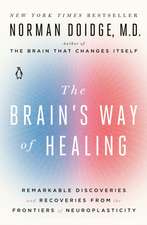Injuries in Athletics: Causes and Consequences
Autor Semyon M. Slobounoven Limba Engleză Hardback – iul 2008
| Toate formatele și edițiile | Preț | Express |
|---|---|---|
| Paperback (1) | 1229.58 lei 6-8 săpt. | |
| Springer Us – 11 sep 2014 | 1229.58 lei 6-8 săpt. | |
| Hardback (1) | 1065.40 lei 38-44 zile | |
| Springer Us – iul 2008 | 1065.40 lei 38-44 zile |
Preț: 1065.40 lei
Preț vechi: 1401.84 lei
-24% Nou
Puncte Express: 1598
Preț estimativ în valută:
203.89€ • 210.63$ • 169.69£
203.89€ • 210.63$ • 169.69£
Carte tipărită la comandă
Livrare economică 21-27 martie
Preluare comenzi: 021 569.72.76
Specificații
ISBN-13: 9780387725765
ISBN-10: 0387725768
Pagini: 544
Ilustrații: XX, 544 p.
Dimensiuni: 155 x 235 x 30 mm
Greutate: 0.91 kg
Ediția:2008
Editura: Springer Us
Colecția Springer
Locul publicării:New York, NY, United States
ISBN-10: 0387725768
Pagini: 544
Ilustrații: XX, 544 p.
Dimensiuni: 155 x 235 x 30 mm
Greutate: 0.91 kg
Ediția:2008
Editura: Springer Us
Colecția Springer
Locul publicării:New York, NY, United States
Public țintă
ResearchDescriere
Over the past decade, the scientific information on psychology of injury has increased considerably. Despite dramatic advances in physical education of coaches, field of medicine, athletic training, and physical therapy, the sport-related traumatic injuries is our major concern. Athletic injuries, both single and multiple, have a tendency to grow dramatically. Accordingly, prevention of sport-related injuries is a major challenge facing the sport medicine world today. The purpose of this book is to accumulate the latest development in psychological analyses, evaluation, and management of sport-related injuries, including traumatic brain injuries. No two traumatic injuries are alike in mechanism, symptoms, or symptoms resolution. There is still no agreement upon psychological diagnosis and there is no known comprehensive treatment for sport-related injuries for regaining pre-injury status. Physical symptoms resolution is not an indication of "psychological trauma" resolution.
Cuprins
Foundations of Injury in Athletics.- Classification of Injuries in Athletics.- Science of Training and Injury in Athletics.- Balance as a Risk Factor for Athletic Injuries.- Fatigue-Related Injuries in Athletes.- Nutrition as a Risk Factor for Injury in Elite Athletes.- Coaches and Athletes' Perspectives of Injury.- Injury in Athletics: Coaches' Point of View.- Injury from Athletes' Perspectives.- Interviews with Injured Athletes.- Overuse Injuries: Students' Points of View.- Fitness Assessment in Athletes.- Psychological Traumas in Athletes.- Psychological Trauma: Unfortunate Experience in Athletics.- Fear as Adaptive or Maladaptive Form of Emotional Response.- Fear of Injury, Kinesiophobia & Perceived Risk.- Multiple Facets of Pain due to Injury.- Psychological Trauma: Case Studies.- Psychological Trauma: Age & Gender Factors.- Concussion in Athletes.- Concussion: Why Bother?.- Concussion Classification: Historical Perspectives and Current Trends.- Evaluation of Concussion: Signs and Symptoms.- Traumatic Brain Injuries in Children.- Injury Rehabilitation.- Integrated Injury Rehabilitation.- EEG & Neurofeedback in Rehabilitation.- Virtual Reality in Injury Rehabilitation.
Notă biografică
Semyon Slobounov, Ph.D., is a Professor in the Department of Kinesiology College of Health of Human Development, and Adjunct Professor of Orthopaedics and Medical Rehabilitation with Hershey Medical College at the Pennsylvania State University, with primary responsibilities to teach undergraduate and graduate courses in the areas of psychology of injury, neural basis of motor behavior, and psychophysiology. His coaching background and clinical work with numerous injured athletes for more than 25 years was instrumental for development of ideas and topics elaborated in this book. His research focused on neural basis of human movements with special emphasis on rehabilitation medicine, psychology and neurophysiology, including traumatic brain injuries. Dr. Slobounov is an adjunct investigator with the National Institute of Health, National Institute of Neurological Disorders and Stroke. He also is an adjunct Professor of the Neuroscience and an affiliate Professor of Gerontology Center at Penn State. He received his first Ph.D. from the University of Leningrad, Department of Psychology, USSR in 1978 and his second Ph.D. from the University of Illinois at Urbana-Champaign, Department of Kinesiology in 1994.
Textul de pe ultima copertă
INJURIES IN ATHLETICS:
CAUSES AND CONSEQUENCES
Despite dramatic advances in the physical education of coaches, as well as in the fields of medicine, athletic training and physical therapy, sport-related traumatic injuries are our major concern. It is a matter of fact that athletic injuries, both single and multiple, have a tendency to grow dramatically. Accordingly, prediction and prevention of sport-related injuries is the athletic community’s major challenge.
Injuries in Athletics: Causes and Consequences stresses that there is still confusion among coaches and medical personnel in terms of injured athletes’ readiness for sport participation and readiness for competition criteria. It is important to note that an "injury physical symptoms resolution is not an indication of injury resolution per se."
This book focuses on both applied and conceptual issues regarding the classification of injuries, common coaches’ errors leading to injury, coaches and athletes’ viewpoints on injury, the development of psychological trauma in athletes, traumatic brain injuries and basic principles of rehabilitation. It is organized into five parts:
CAUSES AND CONSEQUENCES
Despite dramatic advances in the physical education of coaches, as well as in the fields of medicine, athletic training and physical therapy, sport-related traumatic injuries are our major concern. It is a matter of fact that athletic injuries, both single and multiple, have a tendency to grow dramatically. Accordingly, prediction and prevention of sport-related injuries is the athletic community’s major challenge.
Injuries in Athletics: Causes and Consequences stresses that there is still confusion among coaches and medical personnel in terms of injured athletes’ readiness for sport participation and readiness for competition criteria. It is important to note that an "injury physical symptoms resolution is not an indication of injury resolution per se."
This book focuses on both applied and conceptual issues regarding the classification of injuries, common coaches’ errors leading to injury, coaches and athletes’ viewpoints on injury, the development of psychological trauma in athletes, traumatic brain injuries and basic principles of rehabilitation. It is organized into five parts:
- Foundations of injuries in athletics
- Coaches and Athletes’ perspectives of injury
- Psychological traumas in athletes
- Concussion in athletics
- Injury rehabilitation
Caracteristici
Comprehensive analyses of psychological causes and consequences of sport-related injuries with special emphasis on coaches’ perspectives on injury have never been previously accumulated in a single source
Includes supplementary material: sn.pub/extras
Includes supplementary material: sn.pub/extras












